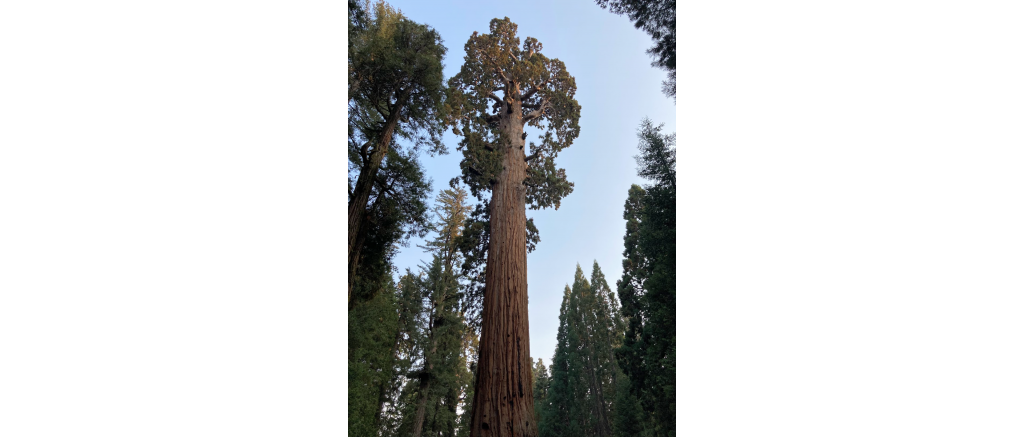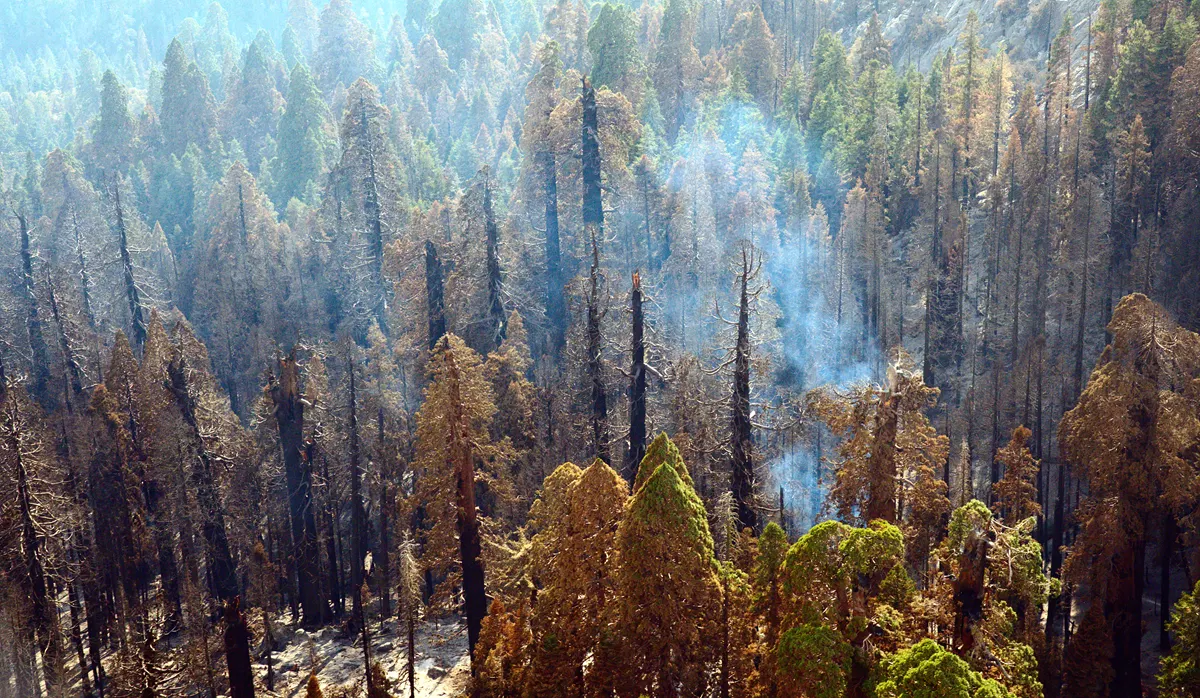- More than 85 percent of all Giant Sequoia grove acreage across the Sierra Nevada has burned in wildfires between 2015 and 2021 compared to only 25 percent in the preceding century (“2021 Fire Impacts” – NPS).
- The devastating impacts of the 2020 and 2021 fires emphasize the need for extremely proactive land management practices in and around Giant Sequoia groves. Most notably, prescribed fires promoted resistance to high severity fire and allowed firefighters to more easily battle the flames to protect these monarchs.
- Climate change is increasing size and severity of fires due to hotter temperatures and drought conditions.
- The Sierra Nevada has experienced a doubling in the area burned by wildfires relative to natural levels from 1984 to 2015 (Low, 2021).
- This combined with doubling tree mortality rates over the same period could precipitate a remarkable shift in the vegetative structures in these mountains.
- These changes were only further exacerbated by the extreme drought of 2012 to 2016 which greatly reduced snowpack and sequoia canopy water content (Baeza, 2021). However, recent intensification of drought has caused the historic fires of 2020 and 2021.
- In the Sierra Nevada, there is an increased risk of tree mortality from drought by 15-20% per degree Celsius increase in surface temperatures (Low, 2021). This means that the Sierra Nevada could see dramatic shifts in ecosystems as increasing numbers of trees die, making fires more intense and recovery less probable. With global temperatures rising 1.1 degrees Celsius due to anthropogenic emissions, the directly correlates to the 13-19% of Giant Sequoias that have died as a result of recent fires. This could unfortunately mean that sequoia mortality was a not a question of if, but when.
- As emissions continue to rise and droughts and fires become more intense, Giant Sequoias may not persist as human changes to the atmosphere could precipitate the downfall of a noble trees species that has survived through countless environmental conditions over millions of years.
The LA Times makes the case for prescribed burns in preventing burning of Sequoia’s ancient groves. The 2020 castle fire led to the loss of 10% of sequoias in the world overall. To further prevent the loss of sequoias, prescribed burns are proposed as a potential solution toward reducing burn risk (Smith, 2021).
Future implications of the comparison in burn severity considering park management (between the National Park Service and Forest Service) may include methods for reducing the overall burn severity of the Forest Service regions by adopting similar methods as the NPS.
Given that the Normalized Burn Ratio of the NPS region is far lower than the Forest Service region while also demonstrating significant improvements in the same time scale, such methods of ecosystem management may be the key in unlocking future considerations for saving California’s Sequoias.

